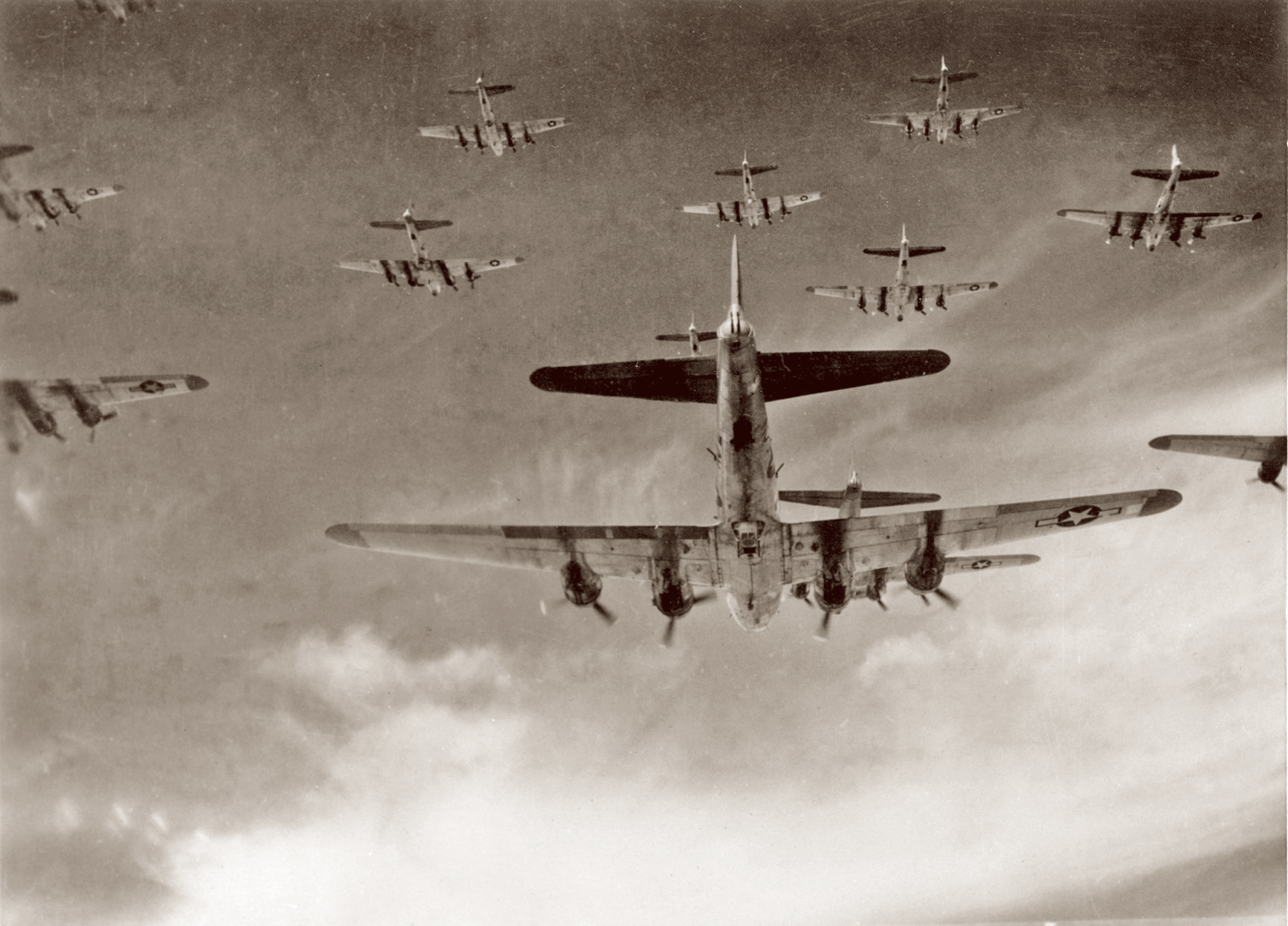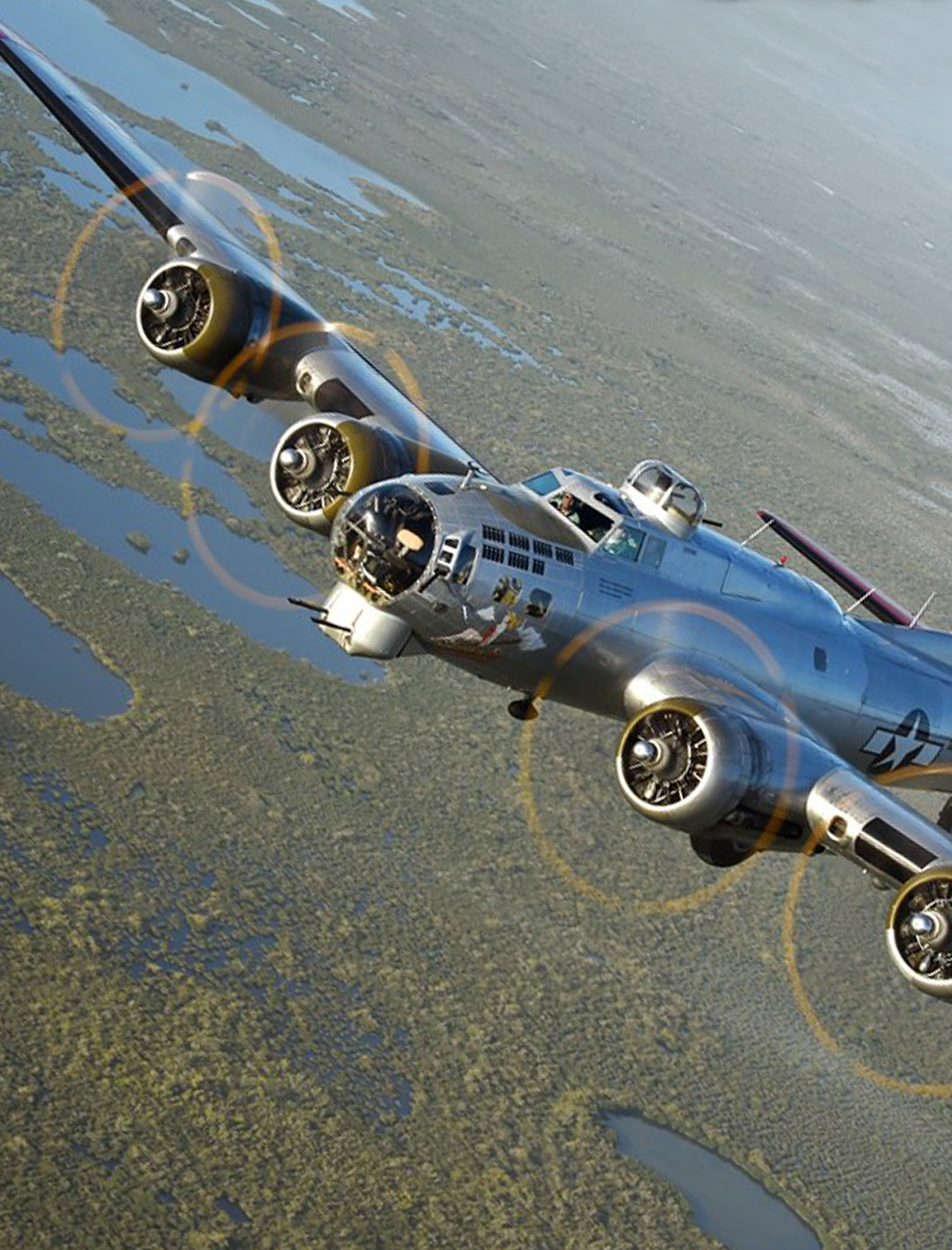- AUST POST SHIPPING
- 0438 654 235
- info@recoverycurios.com
- P.O. Box 7640 Cairns QLD Australia, 4870
-
0
Shopping Cart

B-17 FLYING FORTRESS 'RED TOP' PROPELLER FEATHERING SWITCH
 The Boeing B-17 Flying Fortress’ four turbocharged, Wright R-1820 Cyclone 9 engines gave the 65,500lb (fully ladened) B-17 a maximum speed of 287 mph at 35,000 ft but in an emergency, the USAAF heavy bomber was capable of limping home on just two operational engines. For short distances, it could even stay aloft on one but would rapidly lose speed and height.
The Boeing B-17 Flying Fortress’ four turbocharged, Wright R-1820 Cyclone 9 engines gave the 65,500lb (fully ladened) B-17 a maximum speed of 287 mph at 35,000 ft but in an emergency, the USAAF heavy bomber was capable of limping home on just two operational engines. For short distances, it could even stay aloft on one but would rapidly lose speed and height.
Anything could happen to a B-17’s engines during a mission.
Hits from anti-aircraft flack or enemy fighter attack could result in fire, loss of fuel, coolant or oil stopping a Wright engine dead in its tracks - endangering the entire aircraft and crew.
 It did not even have to be the result of enemy action - many B-17 engines failed through overheating, component failure or any number of maintenance issues and it fell to the aircraft’s co-pilot to ensure each functioned at their optimum settings - all the way to the target and all the way home again.
It did not even have to be the result of enemy action - many B-17 engines failed through overheating, component failure or any number of maintenance issues and it fell to the aircraft’s co-pilot to ensure each functioned at their optimum settings - all the way to the target and all the way home again.
To assist with this, all four R-1820 engines were equiped with an independent fire suppression system that could be triggered from the cockpit should a fire break out in an engine bay.
Once triggered, the failed engine could be effectively turned off with the remaining engines taking the load, and although the B-17’s speed would start draining off and with it, a loss of height, many aircraft still returned home with one or two silent power-plants.
 Whilst the first priority of the co-pilot was to quickly extinguish an engine/s fire - closing its fuel lines whilst increasing RPM on the remaining engines to compensate for its loss, another critical task was to decrease the drag on the aircraft from its now, stationary propeller/s.
Whilst the first priority of the co-pilot was to quickly extinguish an engine/s fire - closing its fuel lines whilst increasing RPM on the remaining engines to compensate for its loss, another critical task was to decrease the drag on the aircraft from its now, stationary propeller/s.
 Ordinarily, a B-17’s four propellers faced forward at right angles to drive air backwards producing thrust but with an engine stopped, that ‘open’ propeller position suddenly created enormous drag on the airframe.
Ordinarily, a B-17’s four propellers faced forward at right angles to drive air backwards producing thrust but with an engine stopped, that ‘open’ propeller position suddenly created enormous drag on the airframe.
To compensate for this, the B-17 was equiped with four Engine Propeller Feathering Switches mounted on the pilot’s main flying panel immediately above the aircraft's Throttle Controls.
 When pressed, a stationary propeller would be automatically rotated to turn edge-first into the airstream reducing drag and perhaps ensuring the B-17 gained those extra precious miles it needed to reach home safely.
When pressed, a stationary propeller would be automatically rotated to turn edge-first into the airstream reducing drag and perhaps ensuring the B-17 gained those extra precious miles it needed to reach home safely.
Some B-17 lost all four engines, forcing the pilot to push the nose down to maintain flight speed and hoping to glide as far as he could to enable the crew to safely bail out or to find an open field or clear stretch of water for a controlled crash landing.
It’s interesting that the B-17’s Red Top Feathering Switches were originally installed with no engine number markings on the Red plungers but as the war progressed, aircrew gradually began to label them from 1 to 4 to avoid any accidental propeller feathering to a wrong engine during the hight of battle.
 This original ‘Red Top Propeller Feathering Switch is a rare and significant artefact of one of the USAAF’s’ most iconic heavy bombers - the B-17 Flying Fortress.
This original ‘Red Top Propeller Feathering Switch is a rare and significant artefact of one of the USAAF’s’ most iconic heavy bombers - the B-17 Flying Fortress.
The Feathering Switch is fully functional and depresses in on its spring as designed.
What a special gift for the aviation enthusiast in your life! - An original, WWII B-17 ‘Red Top’ Propeller Feathering Switch mounted in its 100yr old Mango Wood Display Stand with engraved plaque, printed and laminated Fact Sheet plus a highly detailed, custom built Scale Model of this iconic USAAF Bomber, perched atop its magnetic display arm!
This B-17 Instrument comes complete with detailed Scale Model, Mango Wood Stand & Plaque plus Printed Fact Sheet featuring photo of instrument in the aircraft cockpit.
This B-17 Flying Fortress Instrument comes complete with detailed Scale Model, Mango Wood Stand & Plaque plus Printed Fact Sheet featuring photo of instrument in aircraft cockpit.
Your B-17 Flying Fortress, 'Red Top' Propeller Feathering Switch, Original Recovery Curios Warbird Collectable includes:
- Original Warbird Collectable
- Highly detailed, hand-built and airbrushed 1/72 plastic scale model of the aircraft.
- Hand-crafted and beautifully finished 100yr, Far North Queensland Mango Wood display stand
- Detailed, 2-sided, printed and laminated Instrument Fact Sheet detailing aircraft and instrument
- Removable Magnetic Display Arm
The 1/72 highly detailed scale model is available with wheels & flaps ‘up or down’ and ‘Bomb bay open or closed'
Your complete Recovery Curios Original Instrument Collectable is securely packed and delivery normally takes between 6 - 8 weeks approx.
Did you fly, crew or maintain a a B-17 Flying Fortress or have a friend, colleague or family member who did? Check out our PERSONALISED ORIGINAL INSTRUMENT COLLECTABLE OPTION here.
- LAND
- SEA
- AIR
- VINTAGE ORIGINAL AIRCRAFT INSTRUMENTS
- HAWKER TYPHOON
- VICKERS WELLINGTON
- FAIREY GANNET
- RYAN ST-A SPORTS TRAINER
- DE HAVILLAND TIGER MOTH
- HAWKER HUNTER
- Mc DONNELL DOUGLAS KC-10 AERIAL TANKER
- SOPWITH CAMEL
- AIRCO DH.1 AND DH.2
- JUNKERS JU 87
- CURTISS C-46 COMMANDO
- HANDLEY PAGE HAMPDEN
- SUPERMARINE SEAFIRE
- B-25 MITCHELL BOMBER
- BRISTOL BLENHEIM
- ENGLISH ELECTRIC LIGHTNING
- HAWKER TEMPEST MkVI
- YAKOVELOV YAK - 3
- FOCKE-WULF FW190
- FOLLAND GNAT
- AIRSPEED OXFORD
- SHORT STIRLING
- AVRO ANSON
- DOUGLAS C-133 CARGOMASTER
- HANDLEY PAGE VICTOR BOMBER
- DE HAVILLAND SEA VENOM
- VICKERS VALIANT BOMBER
- DOUGLAS A-26 INVADER
- GRUMMAN S2F TRACKER
- SUPERMARINE SPITFIRE
- LOCKHEED P2-V NEPTUNE
- P-51 MUSTANG
- BRISTOL BEAUFIGHTER
- DE HAVILLAND MOSQUITO
- B-26 MARTIN MARAUDER
- P3 ORION
- DOUGLAS A-20 HAVOC
- P-39 AIRACOBRA
- AVRO SHACKLETON
- B-17 FLYING FORTRESS
- B-24 LIBERATOR
- MESSERSCHMITT BF-110
- MESSERSCHMITT BF-109
- BRISTOL BEAUFORT
- KAWASAKI Ki-45 (NICK) INTERCEPTOR
- C-130 HERCULES
- CAC BOOMERANG
- AVRO LANCASTER
- GRUMMAN F4F WILDCAT
- F4U VOUGHT CORSAIR
- WESTLAND LYSANDER
- P-47 REPUBLIC THUNDERBOLT
- NORTH AMERICAN T-6 TEXAN - HAVARD
- C-47 SKYTRAIN
- DOUGLAS SBD DAUNTLESS
- CAC WIRRAWAY
- PBY CATALINA
- P-40 WARHAWK
- FAIREY SWORDFISH
- P-38 LIGHTNING
- HAWKER HURRICANE
- CURTISS SB2C HELLDIVER
- GRUMMAN F6F HELLCAT
- SEAKING HELICOPTER
- SEAHAWK HELICOPTER
- DOUGLAS A4G SKYHAWK
- GRUMMAN TBF AVENGER
- HANDLEY PAGE HALIFAX
- DOUGLAS SKYRAIDER AE-1
- GLOSTER METEOR
- JUNKERS JU-88
- F-86 SABRE JET
- SHORT SUNDERLAND
- B-29 SUPER FORTRESS
- F-9F GRUMMAN PANTHER
- F-100D SUPER SABRE
- BELL UH-1 HUEY HELICOPTER
- AVRO VULCAN STRATEGIC BOMBER
- CANBERRA BOMBER
- DHC-4 CARIBOU
- BLACKBURN BUCCANEER
- DE HAVILLAND VAMPIRE JET
- HAWKER SEA FURY
- LOCKHEED HUDSON
- LOCKHEED EC-121 WARNING STAR
- SEPECAT JAGUAR
- HAWKER SIDDELEY NIMROD
- HAWKER SIDDELEY HARRIER
- ARADO AR 196
- VOUGHT OS2U KINGFISHER
- LOCKHEED ELECTRA
- NORTHROP P-61 BLACK WIDOW
- BOEING CH-47 CHINOOK
- LOCKHEED PV-1 VENTURA
- BOEING P26-A 'PEASHOOTER'
- Ilyushin Il-2 ‘Sturmovik’
- WESTLAND WESSEX
- FAIREY FIREFLY
- VINTAGE AVIATION COLLECTABLES
- VINTAGE COLLECTABLE MODEL AIRCRAFT KITS
- RETRO STYLE METAL AIRCRAFT COLLECTABLES
- VINTAGE ORIGINAL AIRCRAFT INSTRUMENTS



